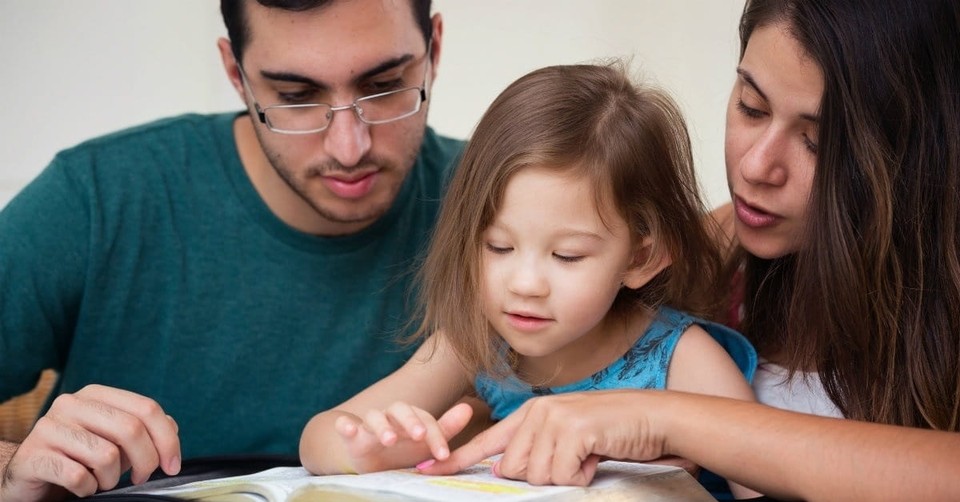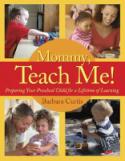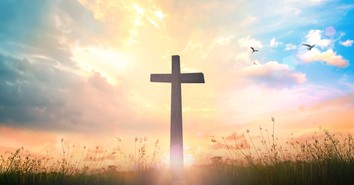10 Lenten Traditions to Enrich Your Family's Easter Celebration

I'll never forget our family's first Christian Easter. With the children snuggled down for the night, my husband Tripp and I dutifully filled five waiting baskets as we had done all the years before. But something seemed to be missing, which was strange because something had really been added - our understanding of the true meaning of Easter - Jesus' Death and Resurrection.
"Did we forget anything?" I asked as we arranged the last colored eggs.
"I've got the same feeling," Tripp said. "I think it's just because we've changed. The most important part of Easter now will be church tomorrow morning."
Looking back some 20 years later, I understand the unsettled feeling we were sharing. Two children who had celebrated Easter with baskets and bunnies had grown up with little else to pass on to their own children. Yet since we wanted our new relationship with Christ to be part of our family's daily life - not just Sunday only - Tripp and I were always interested in ways to bring the message of Jesus' resurrection home.
We needed traditions.
Traditions - especially those children can see, hear, feel, smell and taste - provide vivid impressions on which parents can build year after year. There are many which will enrich your own family's celebration of what might be more accurately called Resurrection Day. Choose a few from this collection, share their meaning in whatever words your children will understand, and keep the ones you like as part of your family's Easter heritage.
Lent
Lent is a forty day period before Easter set aside as a season of soul-searching and repentance. The forty days reflect Jesus' withdrawal into the wilderness for his own time of spiritual reflection. Sundays, because they commemorate the Resurrection, are not counted. In the early church Lent was a special time when new converts were instructed in the faith and prepared for baptism on Easter.
Churches which follow a liturgical calendar - annually reliving the major events in Jesus' life - place great emphasis on Lent. Whether your own church makes much or little of these forty days, your family will benefit from preparing in advance to celebrate Jesus' Resurrection with these lent tradition ideas. Children will cherish Easter more with anticipation sweetening the weeks before.
1. New Life: As Lent begins, help your children plant crocus, daffodil, or hyacinth bulbs in a bowl of sand, covering halfway. Leave in a dark closet for two months, keeping soil moist (a process known as forcing bulbs). When shoots appear, let them bask in the sun. Don't forget to leave one bulb unplanted as a reminder of how they began.
2. Devotions: Lent can be a time of family focus on the meaning of the Christian life. You may want to commit to a regular pattern of family worship - daily, weekly, or whenever you can. Or you may post Bible verses, especially the words of Jesus, on the refrigerator, bathroom mirrors, wherever a busy family is sure to see them. Talk about them at dinner or on the way to school - especially how verses apply to events in our daily lives.
3. Giving up: Traditionally, especially in Europe, during Lent there were no weddings, no dancing, no singing. No flowers or alleluias in churches. Some families may find spiritual value in giving up something for Lent - television, sweets, video games - not as a penance, but as an outer symbol of dying to self during a season of spiritual reflection.
4. Mite box: Select a charity that helps those in need. Help your children decorate a box with a slot on top. Display where everyone at home will remember to contribute their change. On Easter, empty box, count together, and put a check in the mail. This custom can be directly related to the preceding one: giving up to give.
5. Pretzels: Bake your own pretzels (check your own cookbooks, library or Internet for recipe - or buy the frozen ones). Pretzels originated as early Christian Lenten treats, designed in the form of arms crossed in prayer.
6. Easter Seals: Support or volunteer for this organization, founded in 1934 as a means to raise funds to help children with disabilities. In the original words, "Easter means Resurrection and New Life, and the rehabilitation of crippled children means new life and activity . . . physically, mentally, spiritually."
7. Jonah: In Matthew 12:39-41, Jesus, points to the story of Jonah as a sign of his own destiny. So this is a great time to review it with your children, discussing the issues of sin, obedience, and God's mercy.
8. Easter in Cyberspace: Check out www.njwebworks.com/easter/ for many, many Christian Easter links, including history, poetry, drama, and daily meditations.
9. Giving: While we usually think of Christmas for gift-giving, Easter has a richer heritage. God gave His Son. Jesus gave His life. Find ways to give unconditionally: money to the homeless person on the corner, treats for those in nursing homes, old clothes to children in another country. Jesus told us clearly, "Whatever you did for one of the least of these brothers of mine, you did for me" (Matthew 25:40).
10. Handel's Messiah: Invest in a CD or tape and bathe your family in this beautiful classic, clearly composed under divine inspiration - each segment a Bible verse prophesying the birth, life, death, and finally the resurrection of Jesus. (The Hallelujah Chorus was a celebration for Easter morning following the Lenten absence of alleluias.)
This article was originally published in Crosswalk Parenting on February 4, 2008.

Barbara is a popular speaker at MOPS and women's events, as well as writers' conferences. Online you can find her at MommyLife and Mommy, Teach Me!.
Originally published March 18, 2019.





